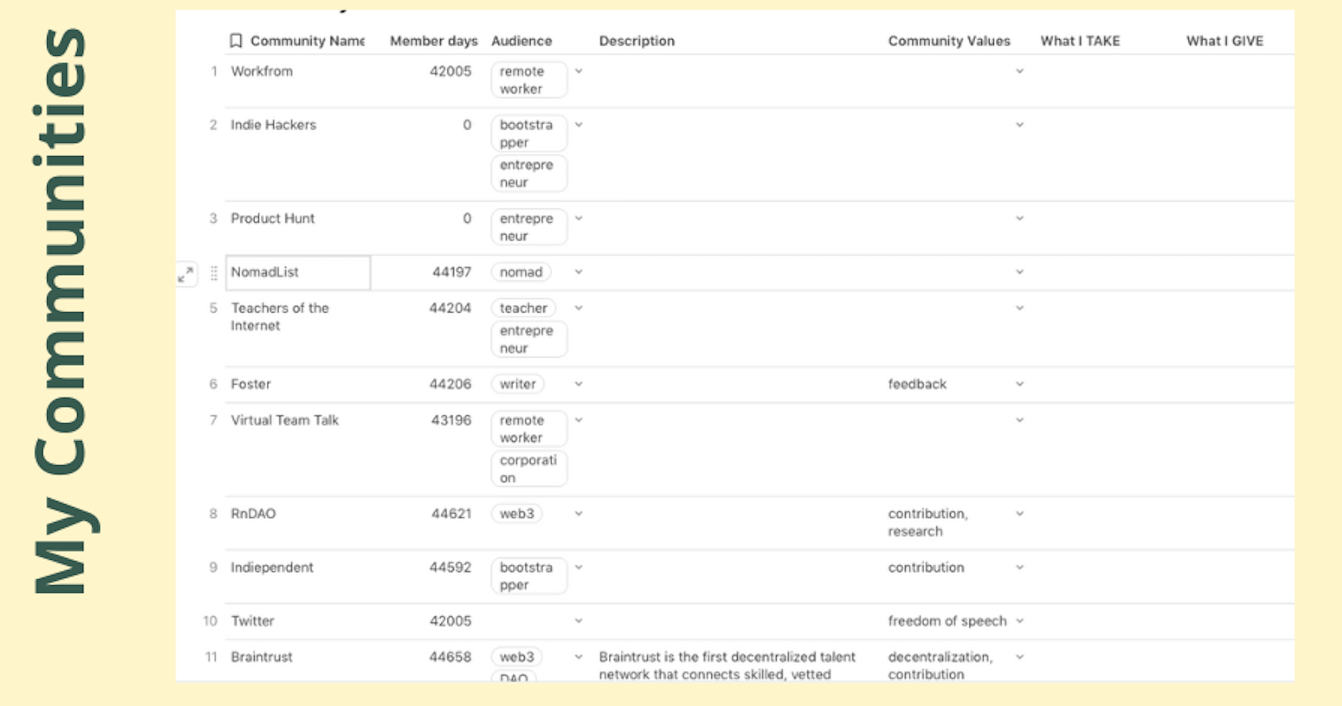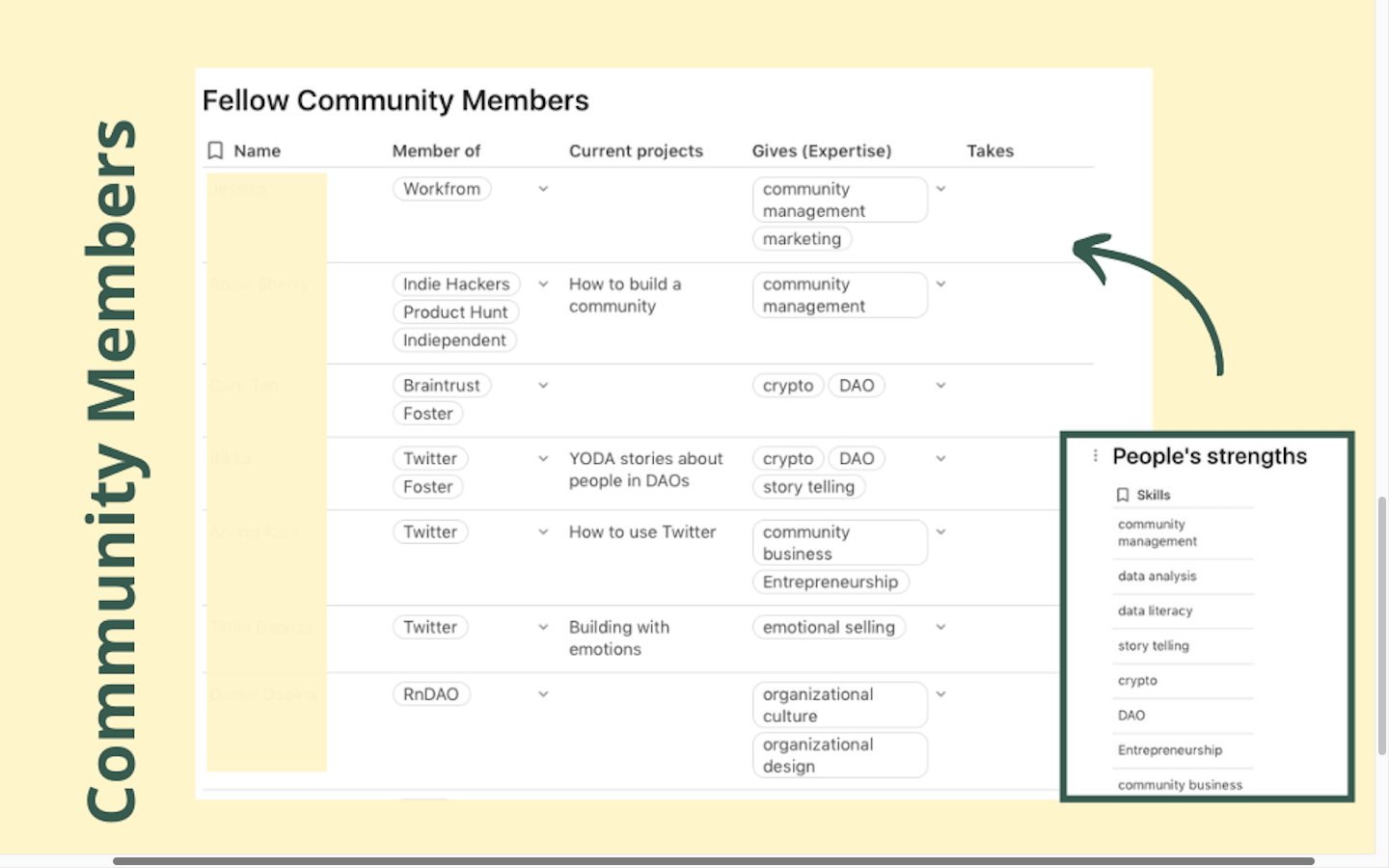Understanding and helping the people around you
Three frameworks and how-to from understanding your web of relationships: Listen & Learn; Power & Responsibility; Give & Receive.
Before you can help and support others you need to know what they need. Listen to their stories and take the time to learn about them.
Take time and listen to what others have to say. No, you don't have to be a lurker standing only on the sideline observing what is going on. The point is to listen with the intention to learn about other community members: What are they working on? What are their fears and strengths? What are their recent successes and failures? By taking the time to learn about others you will be able to help them better.
Next step:
If you are leading a community, make a list of your community members. For each community member, add the following information:
- What are they currently working on?
- What are their aspirations/goals?
- What are their strengths?
- What do they need help with?
You could also have these questions as part of the onboarding process, or have other people fill out the fields. Important is to revisit this list and keep it up-to-date.
Making such a list is also useful when you don't have a leading role in your community. You can create it in one go, or set every week a couple of minutes aside or do it as part of your week review. I did a brain dump and now I'm updating it when I think about it.
I created my list in coda.io as I have other work-related information on it. But anything that will let you build a database will do. This is my set-up:
- Table 1: Communities I'm a member off. In here I enter high-level information about the communities I'm part off. You should at least include the name of the community and it's target audience.

- Table 2: Expertise I have (what I can give) or I need (what I will take).
- Table 3: Community members. For every person I add the communities we are part of (linked to table 1), the person's current project or questions, their expertise (linked to table 2), and what they are looking for. For note-taking purposes I added a column that tracks when the last edit was made.

If you are managing an internal employee community, you could add information such as career aspirations, or under-utilized skills to support people's development.
In your community you have power to influence others through the help and support you provide. Use it responsible and don't usurp your position.
Consider the impact you have on your community. If you are known for answering questions, providing feedback, testing products etc. don't misuse that position, but also make sure you are not taken advantage of. You don't need to answer every questionn. Feel free to pass feedback requests to someone else. This will help build new connections, highlight the expertise of someone else, leading to a stronger, more resilient community.
Next step:
If you frequently answer questions or in other ways actively contribute to the community, use your position to pull other people in the discussion. Ideally, you mention them in conversations where they can add value through their expertise. This works best if you have a good idea of the expertise and projects of other people.
If you see a question or a conversation where you could add something and you tell yourself "Ah, someone else will answer that" stop right there and add to the conversation. Yes, someone else could, but you are reading this post right now and you can contribute. Do it.
For communities to grow, community members need to give (time, knowledge, support), but also have the opportunity to receive (support, information, help)
Giving and receiving is not transactional. A transaction is between two people when two things are traded for each other. Most often stuff is traded for money. Giving and receiving in a community is among all members. I give to Kim, and Kim gives to Tom. Tom receives from Kim and Jane, and gives to Daniel. Giving is done without the assumption that the person will return the favor. People receive with the intention to give back to the community.
Next steps
To give and receive you need to first have the right mindset: You need to be willing to give something to the community without expecting any return. This means participate in conversations just for the sake of the conversation. If you want to receive resources or content from others, you need to be present and give others a chance to reply. Don't ask for last-minute help.
Read more:
- Mini-course on understanding your web of relationships (Get a 20% discount on Founding membership)
- Creating and measuring value in a community (free)
- Is your community a small-world? (free)
- How to be great together (paid)
- Where is the black hole in your organization? (Jeppe Vilstrup Hansgaard)
- “You never know when you need relationships, but when you do, you need them fast” (Fabian Pfortmüller)